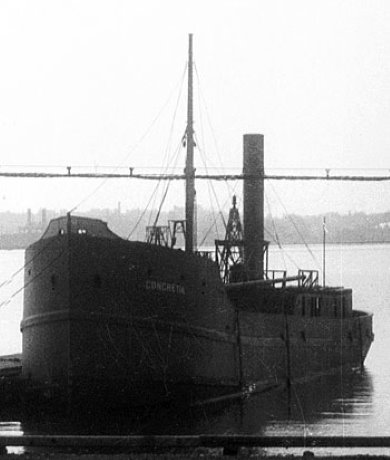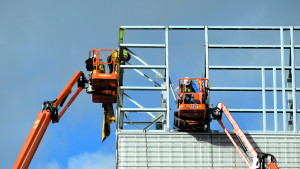North America’s first self-powered vessel made of concrete sailed through waters in the early 1900s.
North America's first self-powered vessel made of concrete sailed through waters in the early 1900s.
In his book Captains of Concrete, Ottawa author Sonny Moran takes readers through memorable moments of the Canadian Government Ship (CGS) Concretia's experiences as a government marine and fisheries ship and then refit as a recreational vessel.
“I believe the Concretia marked an important part of Canadian history because it demonstrated Canada’s innovative capacity during a time of world war,” explained Moran, whose great-uncle served as captain of the vessel.
“The Concretia was an example of the Government of Canada successfully partnering with the research community, in this case McGill University, and a private sector construction company to break new ground in shipbuilding design and durability in North America.”
Concrete ships had been built for use in Europe, but Canada was the first country to bring this form of shipbuilding to North America.
The United States soon followed by building a fleet of concrete merchant marine vessels during WWI.
Concretia was completed in 1917 in Montreal. It was built out of concrete, technically known as ferrocement, as a World War One experimental vessel due to a shortage of wood and steel in Canada. The vessel passed all of its sea trials in 1917 and its existence was officially announced in 1918.
The hull was 18 inches thick on the sides and 24 inches thick at the keel. It was 132 feet long and typically employed a crew of 14.
“Many readers of my book have expressed surprise to me when they learned concrete can float,” said Moran.
Moran described the vessel as a “huge success” as it served as a Department of Marine and Fisheries lighthouse and navigation buoy maintenance ship from 1920 to 1931.
It maintained the lighthouses and navigation buoys critical to ensure safe shipping lanes through the Thousands Islands Region in the St. Lawrence River and into Lake Ontario.
The CGS Concretia was stationed in Prescott, Ont., which is now the location of a Canadian Coast Guard Base.
When it was refit in the late 1970s/early 1980s and renamed the Onaygorah, it was believed to be the largest Canadian pleasure craft registered with Transport Canada, said Moran.
In today’s pleasure craft industry, there are more than 500 boats registered with Transport Canada as having concrete construction, said Moran.
“When steel and wood became plentiful again after the conclusion of World War One the shipbuilding industry did not continue to use ferrocement for use in the construction of commercial merchant ships,” he explained.
“Their heavy hulls became too expensive to operate because they needed too much fuel to push them through the water. As well, concrete merchant vessels have little or no salvage value.”
Moran said writing the book gave him a better understanding of the concrete shipbuilding sector in North America and Europe, “and Canada’s significant role in the industry, that I never knew existed.”
His book has drawn international interest from libraries and maritime museums.











Recent Comments
comments for this post are closed